2023 January 11
Mars Opposition Blog 11 January 2023
With this first post for 2023 I wish you all a Happy New Year. Let us hope that globally it will be a much better one than was 2022. We have now received data from 98 individuals. The list of observers on the front page has been updated. This summary continues the record up to 2022 Dec 31. You might be interested to know that we observed on 328 out of 365 days in 2022.
The UK weather immediately following opposition did not produce too many clear nights. The Director was abroad for nine days over Christmas in the Czech Republic from where he made a few drawings with a humble 70 mm refractor. Severe weather at this time was reported in parts of the USA, and much cloud or bad seeing seems to have dogged many observers in other countries. But at least a few clear nights in the UK yielded good seeing, and observers have taken every opportunity to acquire more data. David Arditti, BAA President, was able to record considerable detail in the Tharsis region on December 10, in his image posted here. The images by Chris Dole (Dec 14) and John Saxton (Dec 16) clearly show that the large aspect of the Solis Lacus, with the N-S canal-like streak of Phasis following, persists.
The NPC is to be seen as a thin bright strip along the N. limb, but the hood persists in some longitudes on the morning side, and it is still rather more apparent around the longitudes of Utopia and Mare Acidalium: witness the image of Martin Lewis for Dec 20, and another by Michael Buechner (Germany) taken on Dec 25. (As of now, early 2023 January, the hood has declined considerably.) We have had an increase in diurnal cloud activity, and the orographic clouds over the Tharsis Montes have been recorded in several images. See the ones for Dec 27 by O.Inoue (Japan) for instance. And there has been a persistent morning cloud around the latitude of Hellas.
A very small and very bright cloud at the S. edge of the N. polar hood appears on the images by W.D.Flanagan for Dec 18 posted here. Others also recorded it.
As cloudy activity at the N. pole declined, there has been more seasonal cloudiness around the S. pole.
There has been a little dust activity too. On Dec 19 T.Olivetti (Thailand) recorded a bright strip of yellowish dust detached from the polar region, lying to the west of Casius-Utopia. Next day this dusty area seemed to form the more yellowish p. end of a strip of hood. By Dec 22 the dusty area seemed to have travelled further east, while on Dec 23 it was succeeded by a much longer E-W orientated strip of dust which veiled Nodus Alcyonius. (Incidentally this feature has been much smaller of late, and the teardrop shape it exhibited a decade ago is gone.) I have made a collage of these images, enhanced the contrast of the Dec 23 image (which in contrast to the others was secured in poor seeing), and arrowed the position of the dust areas on Dec 19 and 23. These images also show persistent morning cloud at the latitude of Hellas, and I add a further image by R.Sedrani (Italy) for Dec 25 that shows the same effect at a different longitude.
I have suspected other small-scale dust activity within or at the edge of the polar hood at other times.
Finally I want to ask observers to obtain as many blue and violet images as possible, as they make it easier to record the seasonal equatorial cloud belt and other delicate white cloud phenomena. Very good examples of what is required can be found in the set of images by Christophe Pellier (France) from Dec 10 or by Vincenzo della Vecchia (Italy) from Dec 12.

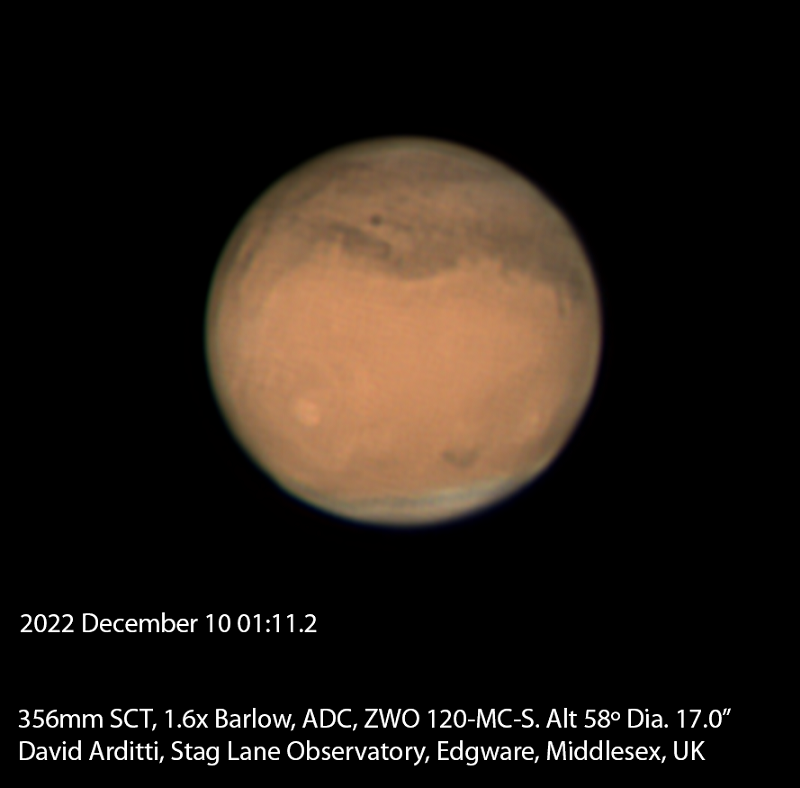
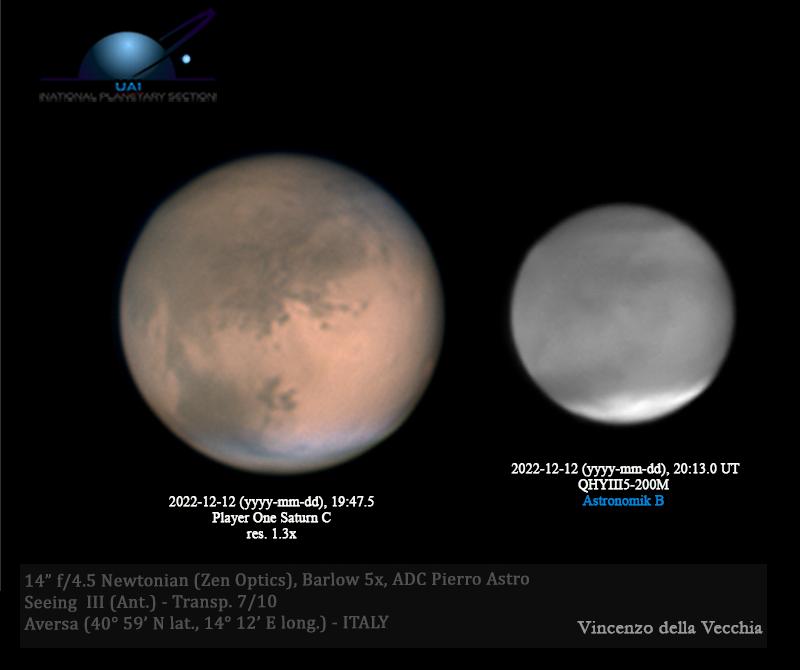
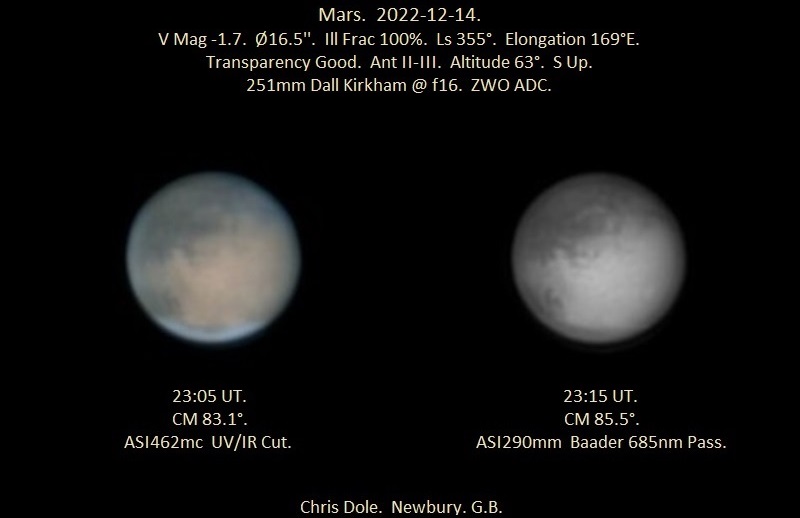


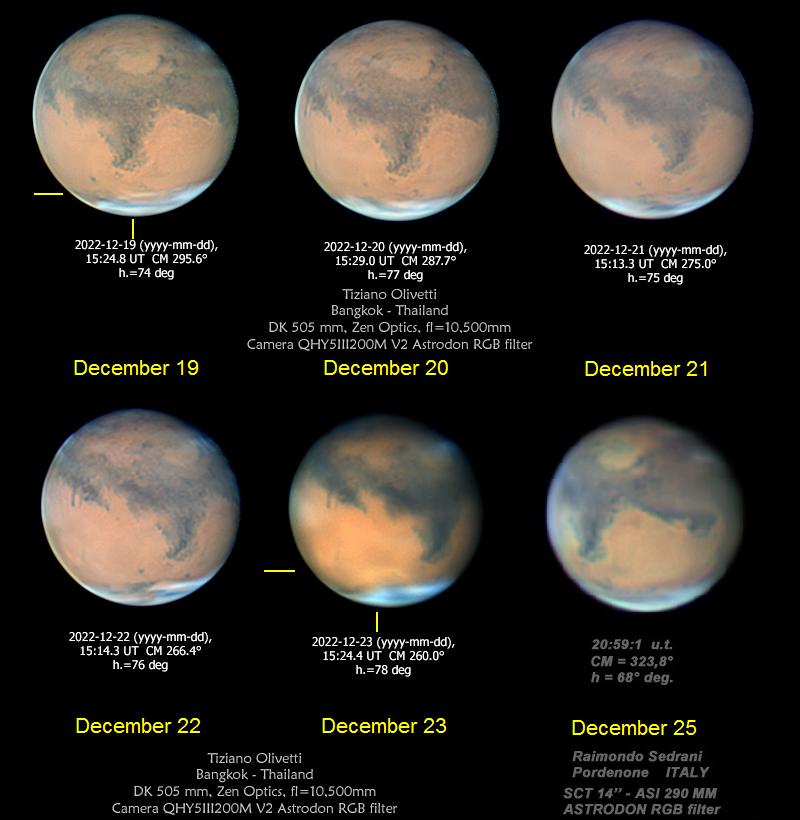
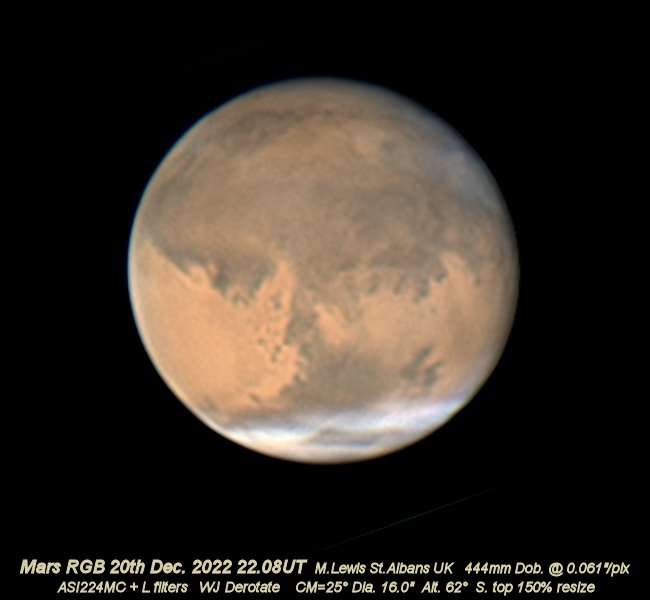


| The British Astronomical Association supports amateur astronomers around the UK and the rest of the world. Find out more about the BAA or join us. |
